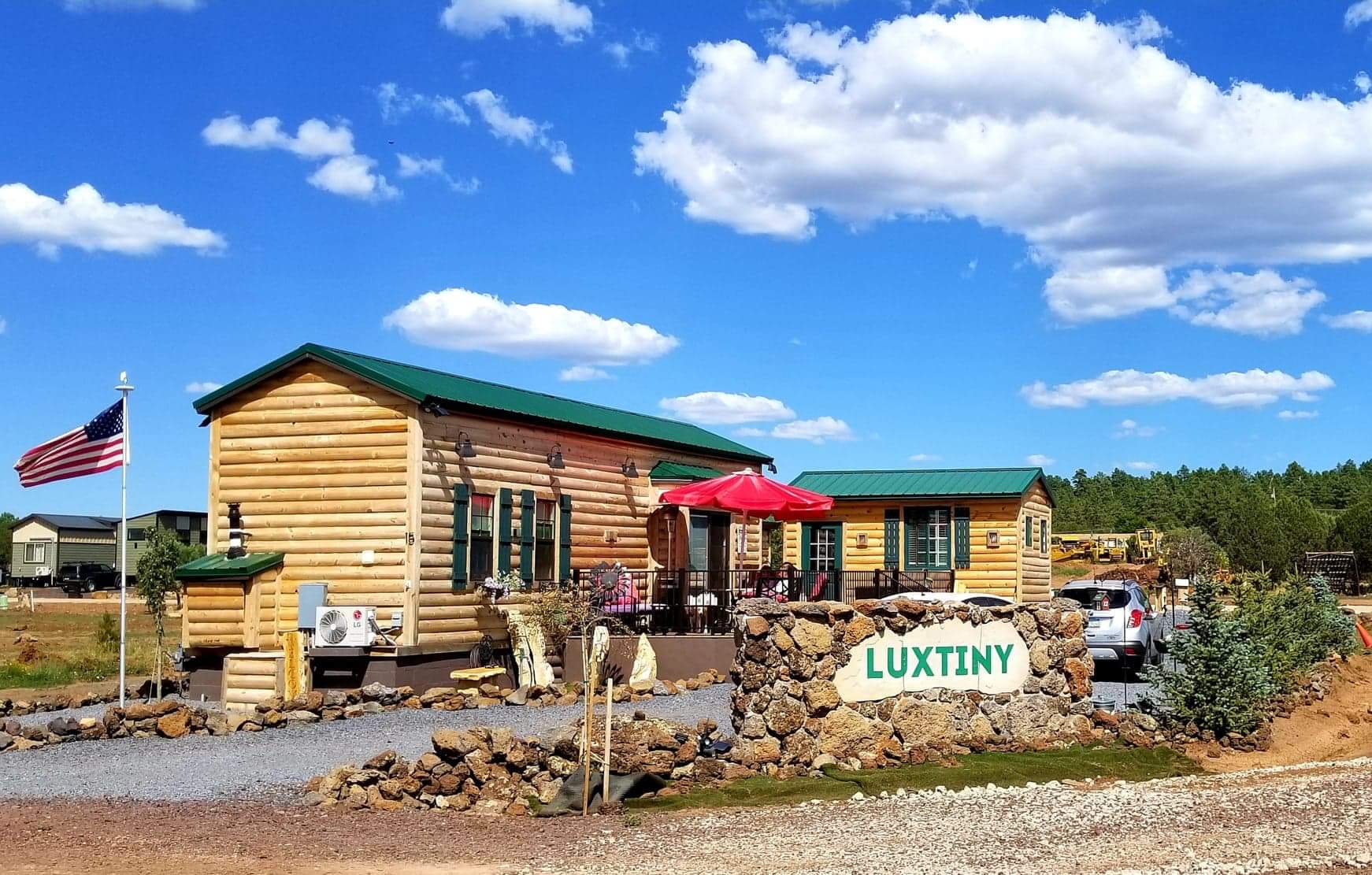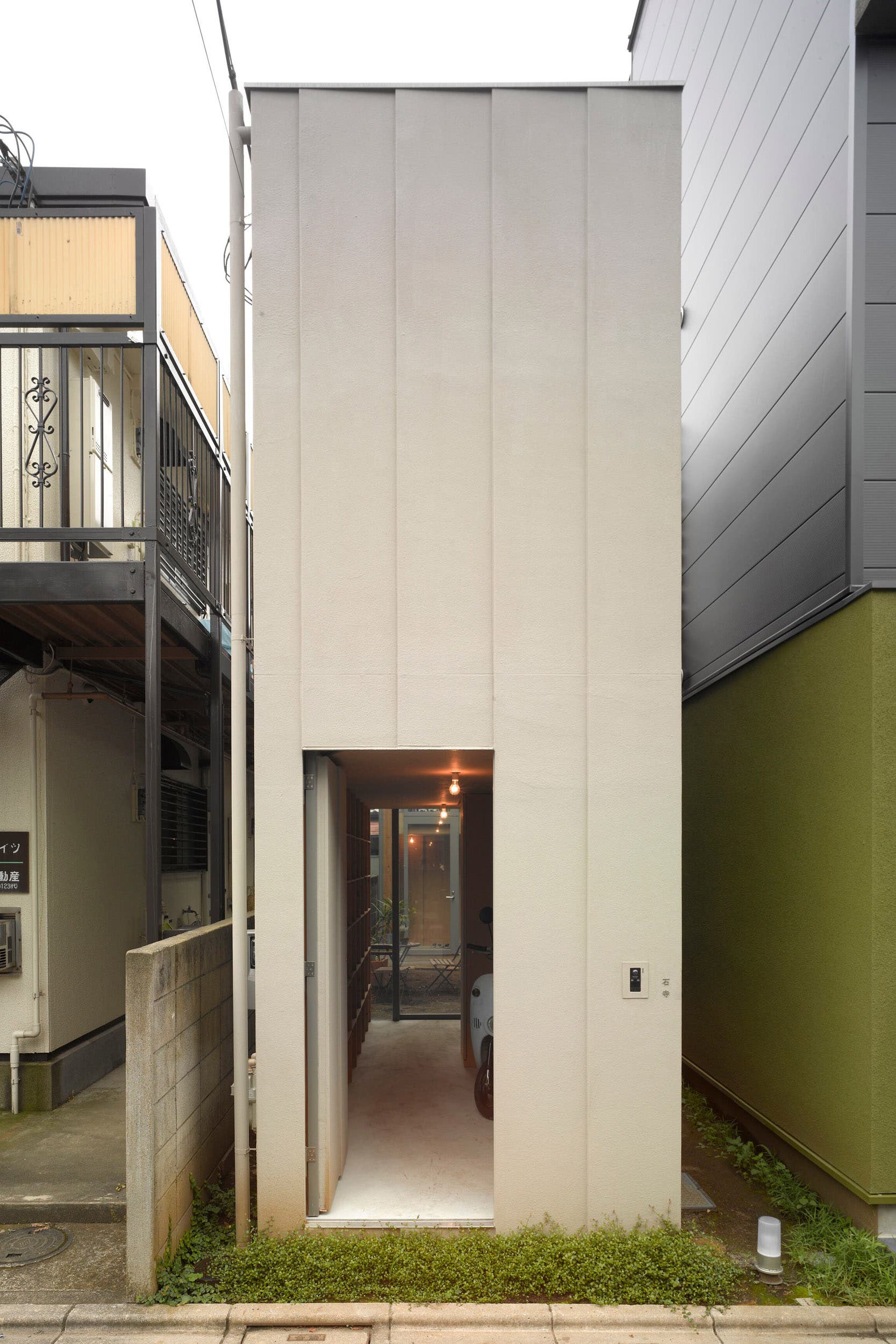Laura Bönig
Many countries are facing housing crisis and increasing demand of living space. With Target 11.1 the United Nations directly address the issue of “affordable housing” (SDG Tracker, 2020). In the USA many people are looking for affordable alternatives that has led to a movement where people live in dwellings generally smaller than 500 square feet (46m2), so-called Tiny houses. In order to solve the problem of unaffordability and homelessness some American cities and communities have already taken up the idea of tiny houses and have created whole villages with very low rents. On the other hand, the size of newly constructed buildings has increased over the last decades. In 2017 American homes were on average 2.631 square feet large(242m2). This trend has consequences for the environment. The US building industry accounts for up to 40% of CO2 emissions and 70% of whole energy consumption of the country which means that there is great potential for reduction. From this another part of the tiny house movement has resulted where mostly young or retired people, who decide to detach from possession because of ecological reason or to save money, move into tiny houses (Saxton, 2019). The following paragraphs are going to highlight the Tiny house movement from the economic and ecological perspective and briefly discuss the movement in Switzerland.
The Origins of Tiny House Movement
The Tiny House movement has its origins in the USA mainly as a respond to the increasing housing affordability issues. The reason for this is that wages are very slowly increasing compared to the rents (Bloomberg, 2020). For many lower- and middle-class households it is bare necessity to look for a cheap dwelling. Since in the USA homeownership is associated with security and has its roots in the historical idea of the “American Dream”, tiny houses seem to be an affordable alternative. Although in many municipalities this way of living is still an informal sector, it is increasing in popularity. Often there are lacking regulations for tiny houses. Zoning restrictions, which for example define a minimum size of the house, density standards or building codes, that are not applicable to tiny houses (that are sometimes even build on mobile foundations), prohibit their installation. It is criticised that these regulations only serve the protection of property values for the well-off and are contributing to segregation rather than to creating equity (Evens, 2018).
In her article about “Overcoming Barriers to Tiny and Small Home Urban Integration» Krista Evans from the Missouri State University emphasizes the important role of urban policy and the importance of thinking about integrating this housing form very carefully, avoiding that tiny house villages end up like caravan parks in an unpleasing environment and cut off from urban infrastructure. Many communities fear that by permitting especially mobile tiny houses would give rise to social problems related to poverty.
There are indeed cities that have defined zones where tiny neighbourhoods emerged or that launched projects to give a shelter to homeless people, which is a highly controversial topic but is not going to be further discussed in this blog. Besides economic reasons, which are in most cases the main driver for downsizing, environmental concerns and the pursuit of a simpler and eventually more meaningful lifestyle play a role in the decision to move into a smaller home.

Figure 77.1 – Luxtiny: Tiny House Community in Arizona USA, (Luxtiny, 2020)
The ecological Tiny House Movement
A study conducted in 2019 in Virginia has explored the environmental impact of downsizing to a tiny house. They surveyed 80 inhabitants of tiny housings and compared their ecological footprint before and after downsizing. There were three main factors identified that reduced the ecological footprint: Smaller building size, reduced material possessions of the inhabitants and increased the awareness of consumption habits in general. Interesting is that the majority of the surveyed tiny-house-owners had an annually income below the median of American citizen that suggests that the economical aspect plays a role as well.
Due to smaller building size, CO2 emissions were reduced on average about 45% because of less energy consumption and higher efficiency (The table below shows a comparison between an average and a tiny house). Efficiency of tiny houses can be augmented by using local and high-quality material and the implementing green technologies, such as solar and greywater harvesting. Those homes are fully functional and makes living off the grid possible. By constructing them onto mobile foundations, it can be easily moved to another place (Saxton, 2019).

Figure 77.2 – Table 1: Based on Table 2.1 “Annual CO2 Emissions Comparison” with converted values (pounds into kg), (Saxton, 2019)
Tiny Houses in Switzerland
American Tiny house movement has also reached Switzerland. The focus lies on minimalism and architectural challenge. However, it is not done with constructing high-quality and energy efficient dwellings if tiny houses are placed in rural areas instead of creating more density in the cities. At the moment tiny house owners have problems to find a place where to put their homes. Because of missing guidelines, the “Verein für innovative Kleinwohnformen Schweiz” was founded, who advocate more uniform guidelines regarding building permissions of tiny houses in Switzerland (Verein Kleinwohnformen Schweiz, 2020).
Legal parking spaces could be land attached to farms, camping sites or on your own property. However, in the long term this would neither support the potential of tiny house movement, namely to downsizing the living space per capita of 46m2 to eventually 7m2 (Swissinfo, 2020), nor would it led to densification, which is seen as necessary to cope with increasing need for living space. In my opinion Tiny house movement has potential but in order to use it on a bigger scale they need to be integrated into urban planning (getting a small impression see picture below).

Figure 77.3 – Tiny house in Tokyo, (NZZ, 2020)
There has to be distinguished between tiny house movement and its potential in the USA and Switzerland. In America affordability is the main driver whereas in Switzerland tiny houses can offer an attractive solution for people who want to scale down their possession and reduce their ecological footprint. Nevertheless, if there are no political guidelines both minimizing costs and environmental impact are very hard to be achieved. One point, which I regard as being very important too, has been left out and this is the potential of tiny house communities to create more social solidarity among the inhabitants. In the case of cities, small housings require public (green) spaces and appealing environment in order to ensure liveability.
References:
Bloomberg. (2020, 05 04). The Homeless Crisis Is Getting Worse in America’s Richest Cities. Retrieved from https://www.bloomberg.com/news/features/2018-11-20/the-homeless-crisis-is-getting-worse-in-america-s-richest-cities
Evens, K. (2018). Overcoming Barriers to Tiny and Small Home Urban Integration: A Comparative Case Study in the Carolinas. Missouri State University: Journal of Planning Education and Research.
Luxtiny. (2020, 05 04). Luxtiny: Luxury Tiny Home Living. Retrieved from http://www.luxtiny.com/tiny-home-community-arizona/
NZZ, B. (2020, 05 04). «Tiny Houses»: Die Schweiz braucht mehr Eigenheime im Miniformat. Retrieved from https://bellevue.nzz.ch/design-wohnen/tiny-houses-die-schweiz-braucht-mehr-eigenheime-im-miniformat-ld.1534370
Saxton, M. W. (2019). The Ecological Footprints of Tiny Home Downsizers: An Exploratory Study. Blacksburg, Virginia: Virginia Polytechnic Institute , Virginia State University.
SDG Tracker, U. o. (2020, 05 04). Sustainable Development Goal 11: Make cities inclusive, safe, resilient and sustainable. Retrieved from https://sdg-tracker.org/cities
Swissinfo. (2020, 05 04). Tiny Häuser haben es in der Schweiz schwer. Retrieved from https://www.swissinfo.ch/ger/multimedia/so-wohnen-schweizer–serie-_tiny-haeuser-haben-es-in-der-schweiz-schwer/44734376
Verein Kleinwohnformen Schweiz. (2020, 05 04). Kleinwohnformen. Retrieved from https://kleinwohnformen.ch/
Media Attributions
- received_637819036705808-1
- CO2 emissions
- a4a3f862-3d46-4e82-886c-e241859d1ee9